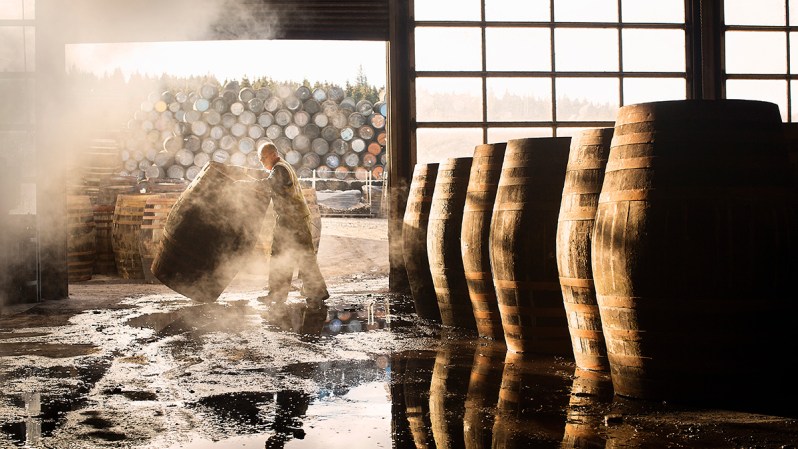
For a whisky to be called Scotch, one rule must be followed above all else: the whisky must be aged in oak casks in Scotland for at least three years. We’re going to bet that most of you already knew that, just as you know that Irish whiskey must be produced in Ireland and bourbon must be produced in the United States. If you didn’t, don’t worry. Welcome to the wonderful world of whisk(e)y. You’re going to love it. We sure do.
Once you know the No. 1 rule, it’s important to know that there are different regions that make Scotch whisky, each with their distinct styles and taste profiles (though there are exceptions to each and every “rule” in each region). In total, there are six Scotch regions, though around half of the country’s 126 licensed distilleries are in Speyside.
Below, you’ll find a guide to each of these regions, including some basic taste profiles and the distilleries that have helped to bring notice to the area.
Highland
The Highland area is the largest Scotch region by size. Because of this, it also produces a huge range of styles and flavor profiles, ranging from very sweet and malty to very dry. North Highland malts are usually lighter in body; Western Highland malts are slightly smoky, yet still less peaty than nearby Islay (more on that in a bit). If you had to choose one region to explore to get the best synopsis of what is going on across Scotch whisky, the Highland region would it for the sheer diversity found within.
Distilleries of note: Balblair, Brora, Dalmore, Glenmorangie, Loch Lomond, and Royal Brackla.
Speyside

This region gets its name from the River Spey, which, incidentally, provides the water to many of the distilleries in the region. Over half of Scotland’s distilleries are located in the Speyside region, accounting for nearly two-thirds of all Scotch production. This was the reason for it being considered its own region (it was once part of the Highland region). The Scotches produced here are the sweetest that you will find in any other area of Scotland. Also in Speyside, you’ll be able to find many different Scotches that are either light and floral or rich and sherried.
Distilleries of note: Aberlour, Balvenie, BenRiach, Craigellachie, Glenfiddich, Glen Moray, Glenrothes, The Macallan, and Speyburn.
Island

Many consider the Island region to be a middle ground between Islay and Highland Scotches (which makes sense, considering it’s designated as a subdivision of the Highland region, just as Speyside ). The are is made up of the Islands of Skye, Mull, Orkney, Arran, Jura, and Lewis. The whiskies produced here are seen to have a coastal taste, with more sweetness and less peatiness than those in Islay, but more so than other Scotch regions.
Distilleries of note: Arran, Highland Park, Jura, and Talisker.
Islay

This region’s Scotch is defined by the dramatic sea climate that surrounds it. Nicknamed “Whisky Island” because of the concentrated number of distilleries found on the isle, the aptly named Islay scotches taste strongly of the sea, adding notes of brine and strong peaty flavors. If you’re looking for incredibly smoky scotch, the Islay region is the place to look.
Distilleries of note: Ardbeg, Bowmore, Bruichladdich, Lagavulin, and Laphroaig.
Lowland

If you’ve never heard of Lowland Scotch, it’s probably because there are only three active distilleries left in the region, a stark comparison to the roughly 200 that were once pumping out whisky. Produced in the southern part of Scotland, the Scotches here are usually lighter, have grassy notes, and can be considered more delicate than other whiskies — a great place to start if you’ve never had a Scotch before.
Distilleries of note: Auchentoshan, Glenkinchie, and Kingsbarn.
Campbeltown

As with the Lowland region, the Campbeltown region was once home to many more distilleries than exist today. Now, you’ll only find three operating distilleries. The Scotches created here are known for complex flavors and a slightly oceanic, salty finish similar to what you would find in the brininess of Islay Scotches. Overall, Campbeltown is a good place to search for rich, robust whiskies.
Distilleries of note: Glengyle, Glen Scotia, and Springbank.




